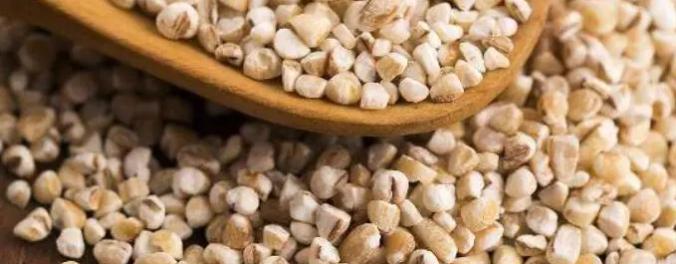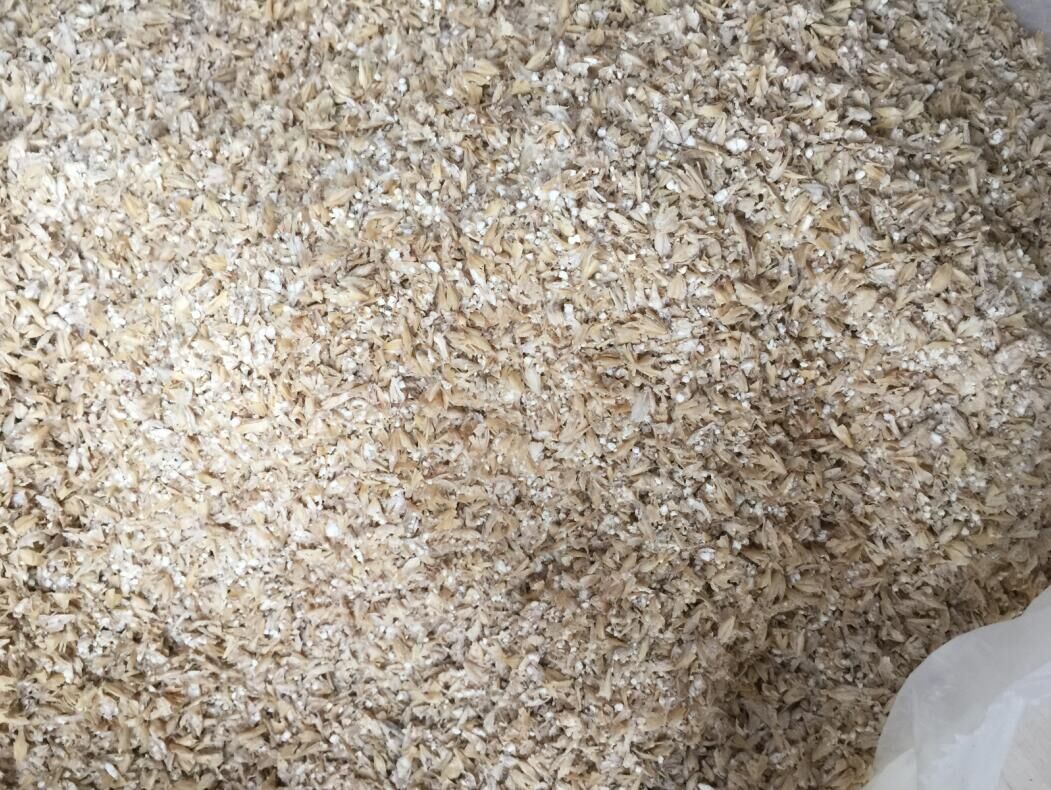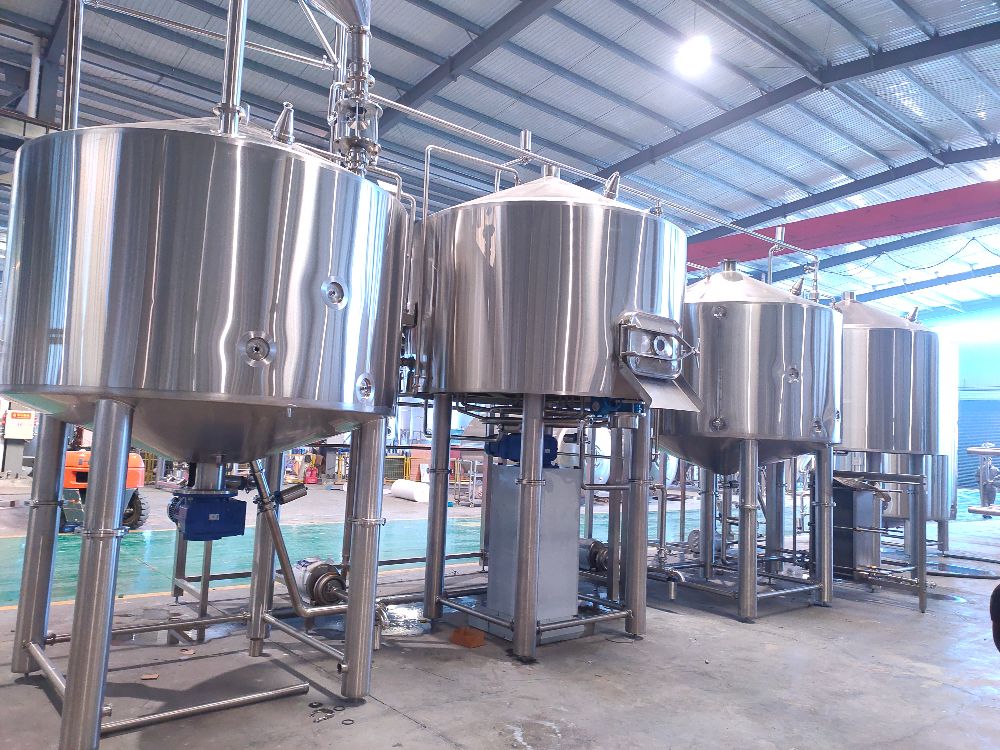Excipients that industrial beer can't live without, craft beer don’t have to SAY NO!
- Oct 16, 2019
- 120
- tiantai
Excipients that industrial beer can't live without, craft beer don’t have to SAY NO!
Excipients (auxiliary materials) seem to have original sin in the eyes of some craft beer brewing lovers. Speaking of auxiliary materials, it is also a variety of disdain. Of course, to some extent, this contempt is justifiable.
After all, the so-called "industrial water beer" has a more or less relationship with these auxiliary materials. The use of a large number of excipients makes the taste of industrial beer more and more faint and the style is more and more uniform.I have seen a report that most breweries use 20 to 30% of rice, and the highest can reach 40 to 50%, or even 70 to 80% (using external added enzyme saccharification). Hey, wait! Is this going to brew beer or rice spirit? Nevertheless, as long as the use of excipients is not aimed at reducing the cost, but to improve the flavor of the beer and improve the non-biological stability of the beer, the craft beer does not exclude the use of auxiliary materials including rice, corn, oats etc..
Now, let's take a look at the commonly used ingredients for beer brewing and what they do.
Rice

In the light-colored rags in the United States and Japan, rice is the main auxiliary material, and rice has no taste. Compared with corn, it makes beer taste less sweet.
Rice characteristics:
1. Protein, polyphenolic substances and fat content are lower than malt, and starch content is higher than malt.
2. It is suitable to brew bottom fermented light beer. The color is light, the taste is refreshing, the foam is fine, the hops are prominent, and the non-biological stability is good.
3. Regardless of the type of rice used, rice must be finely milled to remove the protein cell layer of the rice epidermis, reduce protein content, and reduce fat content to improve beer quality.
4. The shape of rice: divided into short, medium and long types, the brewery often uses short shapes, mainly because the short-shaped varieties have high mashing efficiency, and has low viscosity mash for easier filter.
Pre-processing of rice:
The rice was pulverized into granules, and after wetting, it was pressed into a sheet on a steam-heated roll and gelatinized. Such a processed product is characterized in that, when preparing the wort, it can be directly mixed with the malt without gelatinization, and is suitable for the leaching saccharification method.
Corn

Corn is a common addition for the brewing of British Bitter and Milds. It is widely used in Lager beer in China and the United States. If used properly, corn can lighten the color and firmness of the beer without creating a strong taste. Corn must be saccharified with the base malt together.
There are two things to note when using corn as an addition
1. Must remove corn germ. Because the corn germ contains more fat that is easy to be oxidized and corrupted, which directly affects the foam, taste and flavor of the beer, so it must be removed. In addition, the corn husk is removed during the de-emergence process, which reduces the bitterness of the corn.
2. Try to use new corn. Because while the corn content is during storage, the fat content of the embryo will gradually increase. When it is stored for 1 to 2 years, the fat content can be 2.5 to 5.0% higher than normal value of 1.5 to 3.0. It is to prevent the uncompleted corn germ removing, causing the quality defects of beer.
Corn is used as an auxiliary material and often has the following three forms:
1. Corn pellets: The corn is peeled, then ground into granules, and finally dried until the moisture content is 12-14%.
2. Corn flakes: The coarse corn granules are squeezed between the high temperature rolls, and the starch is also gelatinized during the extrusion process.
3. Corn Starch: The embryonic part and the whole protein are removed at the time of production, and only corn starch is retained, so that it is easily decomposed.
Oat

Oatmeal is great for making porter and Stout (stronge beers). Oatmeal bring a smooth mouthfeel, and makes Stout beer feel creamy.
Oats that can be used for beermaking have whole pellet type, roughed processing (ie, coarse cereal granules) type, coarsely compressed type, and thin-flaky type.
Coarse oatmeal and thin-flaky oatmeal are heated and pressed in the manufacture, and thus their starch has been gelatinized, making it the easiest to buy as "instant cereal" in the store. Whole cereals and traditional rolled oatmeal have less gelatinization than instant cereals, so they must be cooked before adding into mash. Although instant cereals have a certain degree of gelatinization, it is still helpful to cook before adding into mash. Adding more water to make sure the starch is fully utilized. In order to convert the starch into sugar, the oats need to be saccharified with the barley malt.
Barley

Non-germinated barley is commonly used in Stout, which contains protein that provides foam persistence and beer sturdiness. It can also be used in other Strong Ale, which must be saccharified with the base malt. .
The biggest features of beer made from barley as an auxiliary material are:
(1) The foam is better, but because of its high content of hemicellulose and high-viscosity β-glucan, the viscosity of the prepared wort is high, which makes it difficult to filter wort and beer, and corresponding measures should be taken. Polyphenols in the skin are susceptible to color.
(2) Barley starch gelatinization temperature is not high, only 51.5 ~ 59.5 ° C, so it can be crushed with malt. However, since the barley grain is harder than the malt and has high toughness, it is difficult to pulverize it by a roller mill alone.
Wheat

Among wheat beer, unmalted wheat is a commonly used ingredient, including: American wheat ale, Belgium's Lambic and Wit, it is important ingredients. It adds starch turbidity to the beer and increases protein content. Wheat flakes give the beer a more distinctive taste of wheat than wheat buds. It must be saccharified with the base malt when used.
Characteristics and requirements for using wheat:
1. Wheat has high soluble polymer protein content and good foam, but it is easy to cause non-biological stability problems because it is not easy to further decompose.
2. The low anthocyanin content is conducive to the non-biological stability of the beer, and the flavor is also very good, but the color of the wort is slightly deeper.
3. Wheat is different from rice and corn, and is rich in α- and β-amylase, which is beneficial to shorten the saccharification time.
Oatmeal Shell and Rice Bran
Essentially not an excipient.
The outer shell of oats and rice is not fermentable, but is useful in the saccharification process. These shells loose the saccharification liquid and help prevent the saccharification liquid from precipitating and becoming viscous when washing the tank. It is helpful to use a low percentage of barley malt and barley husks when brewing wheat and rye beer.
Translated from 家酿魔法庄园
Excipients (auxiliary materials) seem to have original sin in the eyes of some craft beer brewing lovers. Speaking of auxiliary materials, it is also a variety of disdain. Of course, to some extent, this contempt is justifiable.
After all, the so-called "industrial water beer" has a more or less relationship with these auxiliary materials. The use of a large number of excipients makes the taste of industrial beer more and more faint and the style is more and more uniform.I have seen a report that most breweries use 20 to 30% of rice, and the highest can reach 40 to 50%, or even 70 to 80% (using external added enzyme saccharification). Hey, wait! Is this going to brew beer or rice spirit? Nevertheless, as long as the use of excipients is not aimed at reducing the cost, but to improve the flavor of the beer and improve the non-biological stability of the beer, the craft beer does not exclude the use of auxiliary materials including rice, corn, oats etc..
Now, let's take a look at the commonly used ingredients for beer brewing and what they do.
Rice

In the light-colored rags in the United States and Japan, rice is the main auxiliary material, and rice has no taste. Compared with corn, it makes beer taste less sweet.
Rice characteristics:
1. Protein, polyphenolic substances and fat content are lower than malt, and starch content is higher than malt.
2. It is suitable to brew bottom fermented light beer. The color is light, the taste is refreshing, the foam is fine, the hops are prominent, and the non-biological stability is good.
3. Regardless of the type of rice used, rice must be finely milled to remove the protein cell layer of the rice epidermis, reduce protein content, and reduce fat content to improve beer quality.
4. The shape of rice: divided into short, medium and long types, the brewery often uses short shapes, mainly because the short-shaped varieties have high mashing efficiency, and has low viscosity mash for easier filter.
Pre-processing of rice:
The rice was pulverized into granules, and after wetting, it was pressed into a sheet on a steam-heated roll and gelatinized. Such a processed product is characterized in that, when preparing the wort, it can be directly mixed with the malt without gelatinization, and is suitable for the leaching saccharification method.
Corn

Corn is a common addition for the brewing of British Bitter and Milds. It is widely used in Lager beer in China and the United States. If used properly, corn can lighten the color and firmness of the beer without creating a strong taste. Corn must be saccharified with the base malt together.
There are two things to note when using corn as an addition
1. Must remove corn germ. Because the corn germ contains more fat that is easy to be oxidized and corrupted, which directly affects the foam, taste and flavor of the beer, so it must be removed. In addition, the corn husk is removed during the de-emergence process, which reduces the bitterness of the corn.
2. Try to use new corn. Because while the corn content is during storage, the fat content of the embryo will gradually increase. When it is stored for 1 to 2 years, the fat content can be 2.5 to 5.0% higher than normal value of 1.5 to 3.0. It is to prevent the uncompleted corn germ removing, causing the quality defects of beer.
Corn is used as an auxiliary material and often has the following three forms:
1. Corn pellets: The corn is peeled, then ground into granules, and finally dried until the moisture content is 12-14%.
2. Corn flakes: The coarse corn granules are squeezed between the high temperature rolls, and the starch is also gelatinized during the extrusion process.
3. Corn Starch: The embryonic part and the whole protein are removed at the time of production, and only corn starch is retained, so that it is easily decomposed.
Oat

Oatmeal is great for making porter and Stout (stronge beers). Oatmeal bring a smooth mouthfeel, and makes Stout beer feel creamy.
Oats that can be used for beermaking have whole pellet type, roughed processing (ie, coarse cereal granules) type, coarsely compressed type, and thin-flaky type.
Coarse oatmeal and thin-flaky oatmeal are heated and pressed in the manufacture, and thus their starch has been gelatinized, making it the easiest to buy as "instant cereal" in the store. Whole cereals and traditional rolled oatmeal have less gelatinization than instant cereals, so they must be cooked before adding into mash. Although instant cereals have a certain degree of gelatinization, it is still helpful to cook before adding into mash. Adding more water to make sure the starch is fully utilized. In order to convert the starch into sugar, the oats need to be saccharified with the barley malt.
Barley

Non-germinated barley is commonly used in Stout, which contains protein that provides foam persistence and beer sturdiness. It can also be used in other Strong Ale, which must be saccharified with the base malt. .
The biggest features of beer made from barley as an auxiliary material are:
(1) The foam is better, but because of its high content of hemicellulose and high-viscosity β-glucan, the viscosity of the prepared wort is high, which makes it difficult to filter wort and beer, and corresponding measures should be taken. Polyphenols in the skin are susceptible to color.
(2) Barley starch gelatinization temperature is not high, only 51.5 ~ 59.5 ° C, so it can be crushed with malt. However, since the barley grain is harder than the malt and has high toughness, it is difficult to pulverize it by a roller mill alone.
Wheat

Among wheat beer, unmalted wheat is a commonly used ingredient, including: American wheat ale, Belgium's Lambic and Wit, it is important ingredients. It adds starch turbidity to the beer and increases protein content. Wheat flakes give the beer a more distinctive taste of wheat than wheat buds. It must be saccharified with the base malt when used.
Characteristics and requirements for using wheat:
1. Wheat has high soluble polymer protein content and good foam, but it is easy to cause non-biological stability problems because it is not easy to further decompose.
2. The low anthocyanin content is conducive to the non-biological stability of the beer, and the flavor is also very good, but the color of the wort is slightly deeper.
3. Wheat is different from rice and corn, and is rich in α- and β-amylase, which is beneficial to shorten the saccharification time.
Oatmeal Shell and Rice Bran
Essentially not an excipient.
The outer shell of oats and rice is not fermentable, but is useful in the saccharification process. These shells loose the saccharification liquid and help prevent the saccharification liquid from precipitating and becoming viscous when washing the tank. It is helpful to use a low percentage of barley malt and barley husks when brewing wheat and rye beer.
Translated from 家酿魔法庄园

.jpg)


